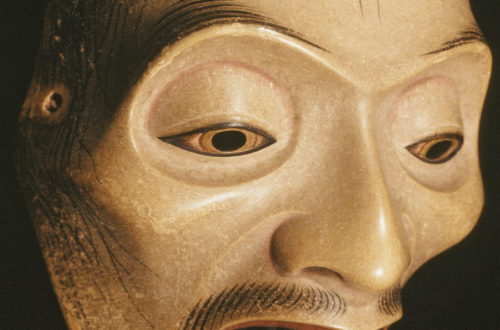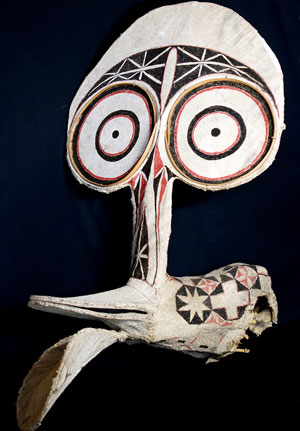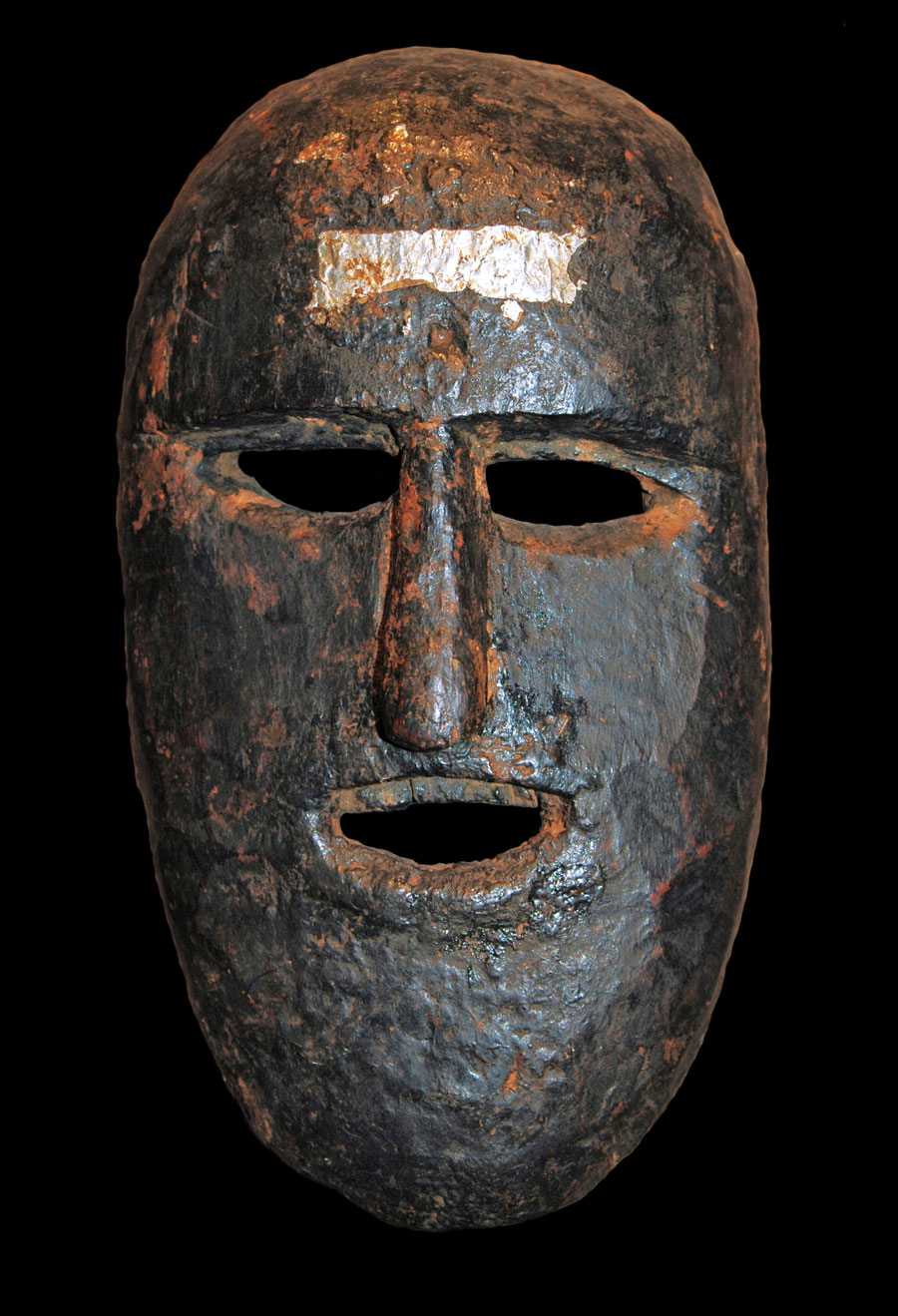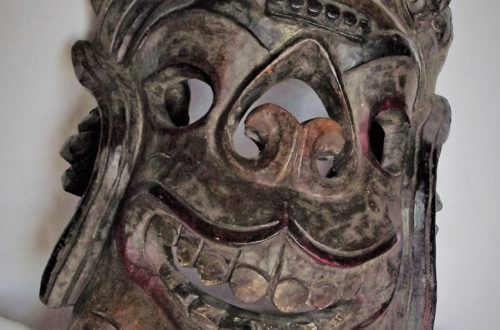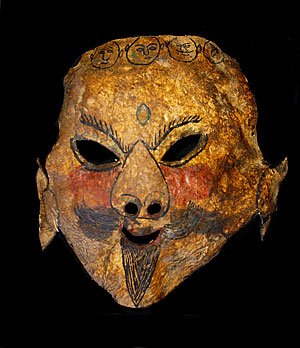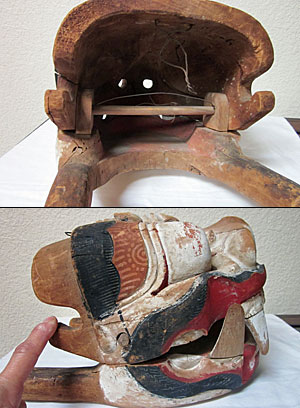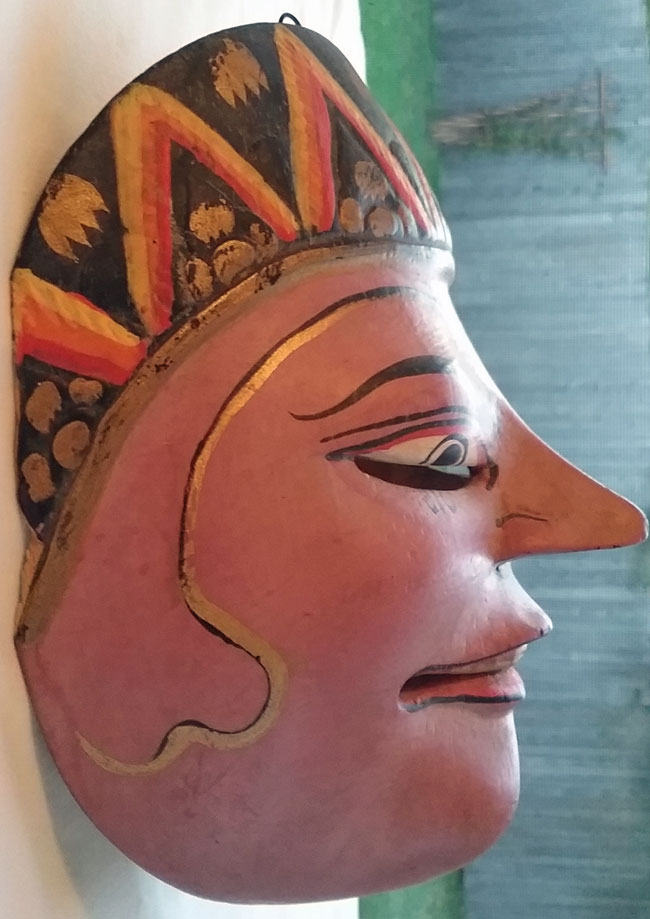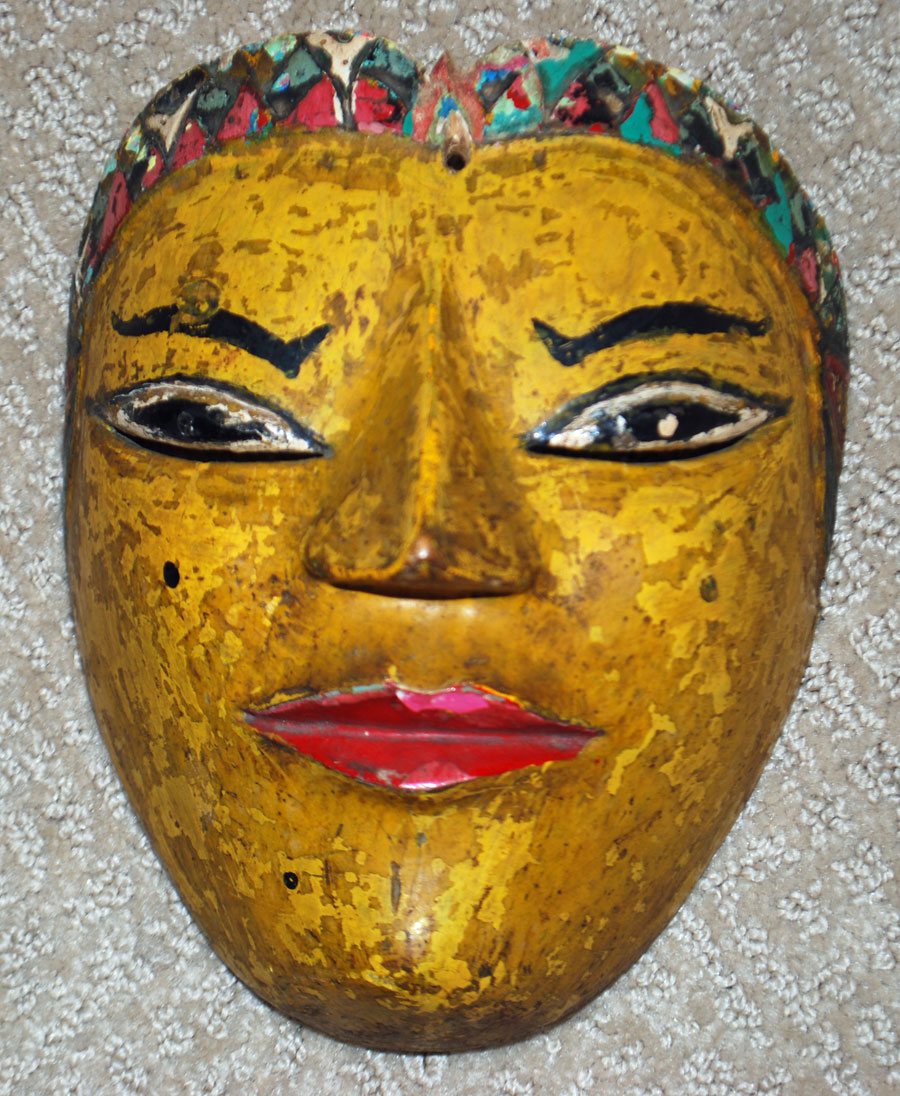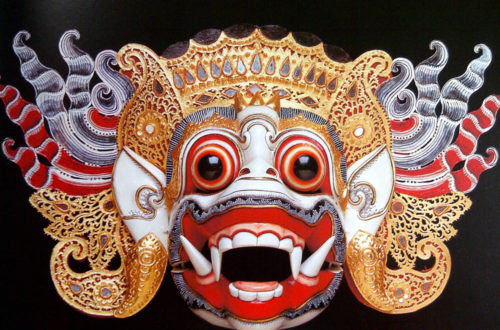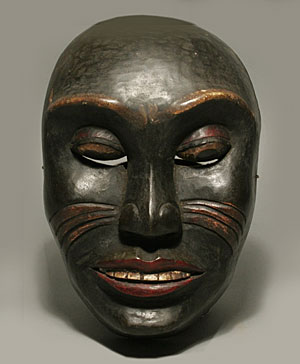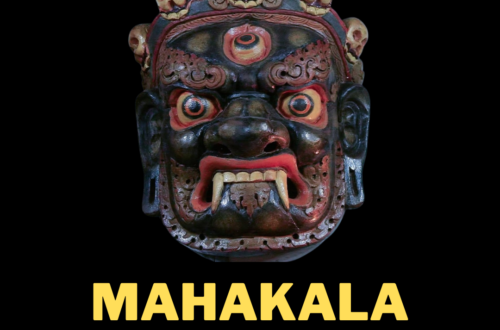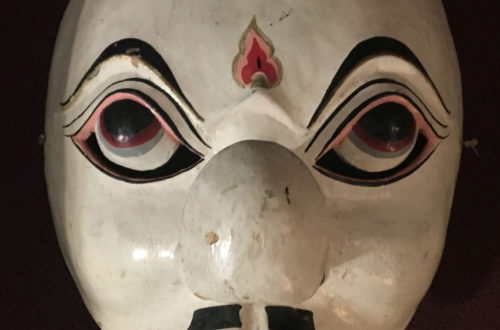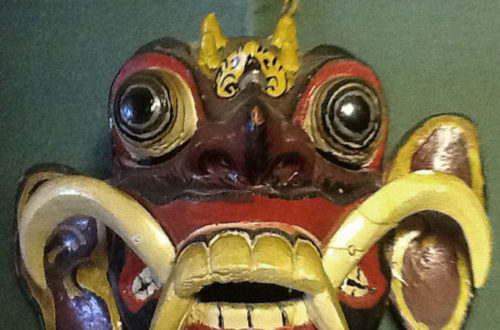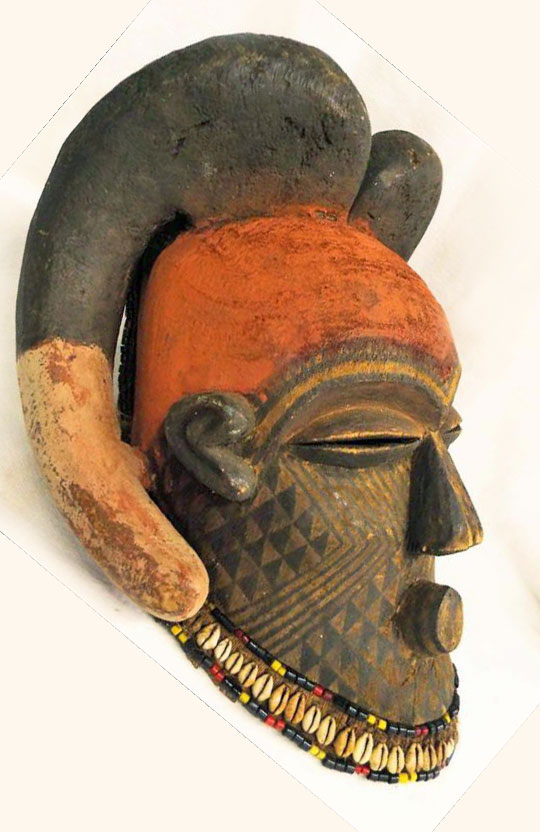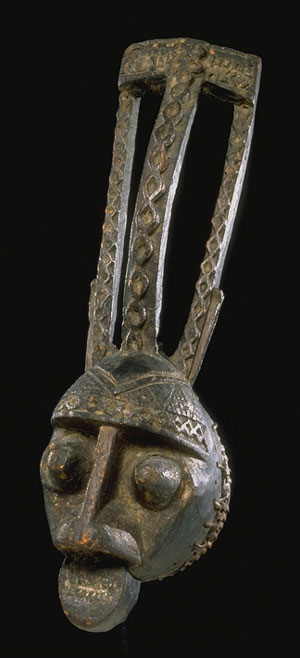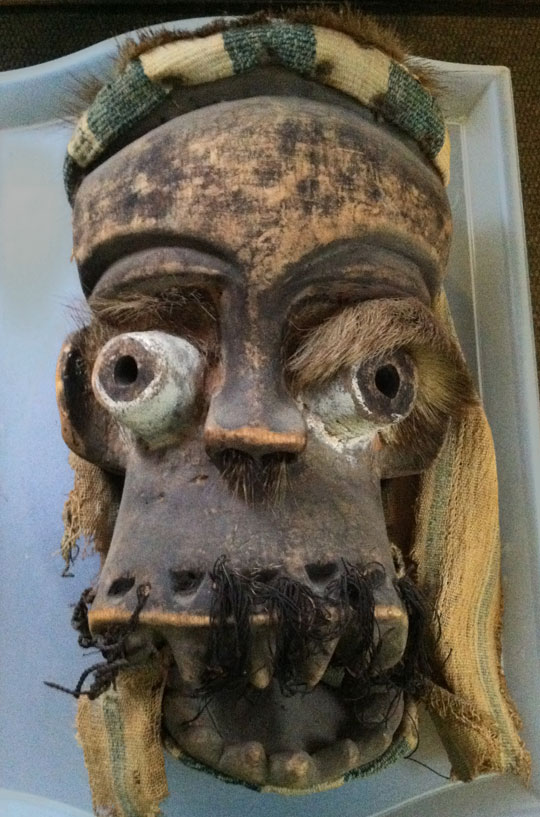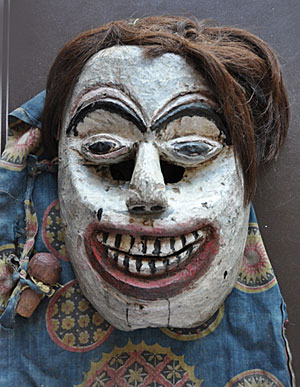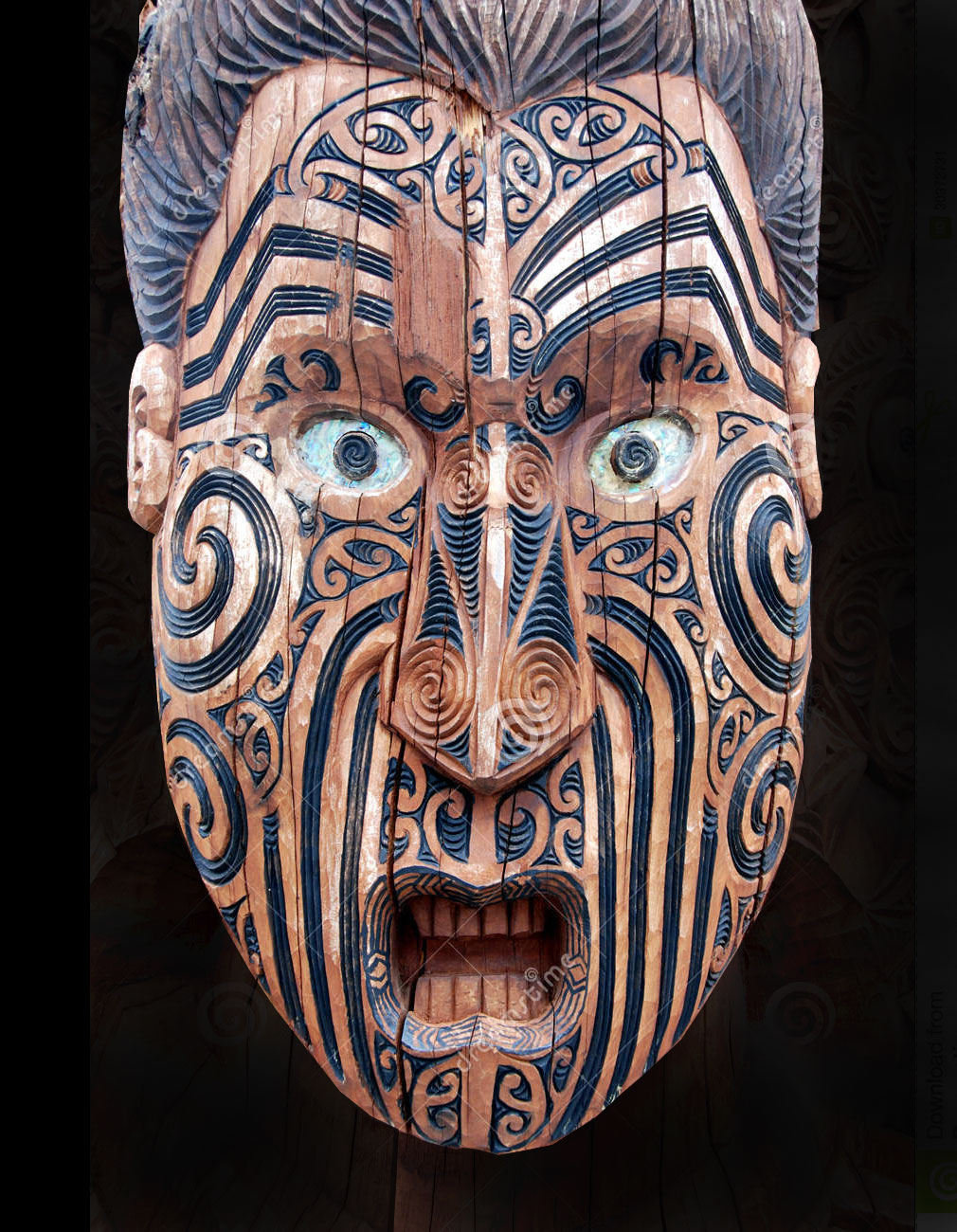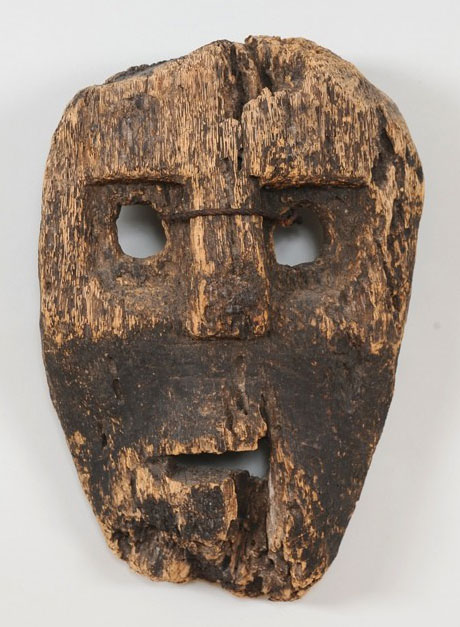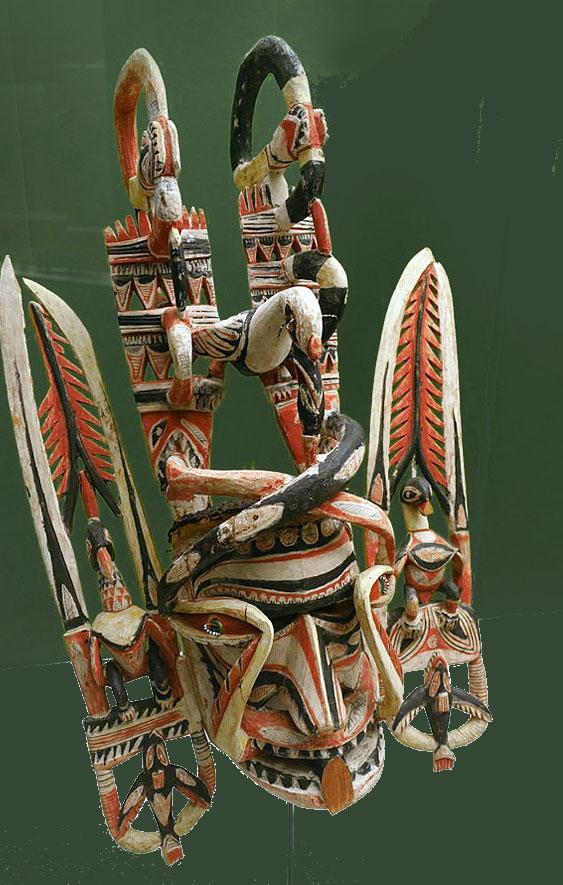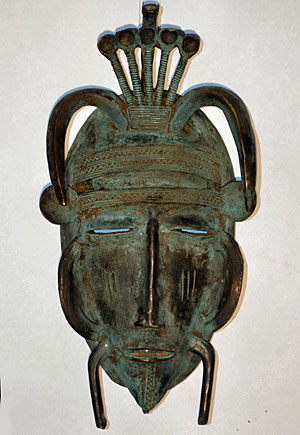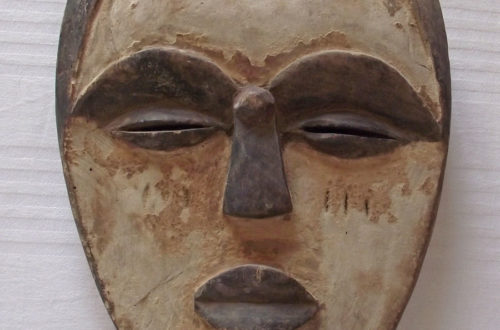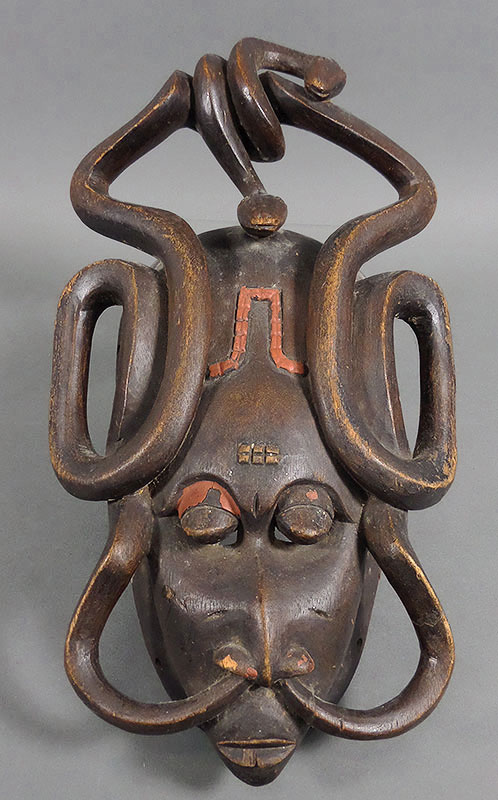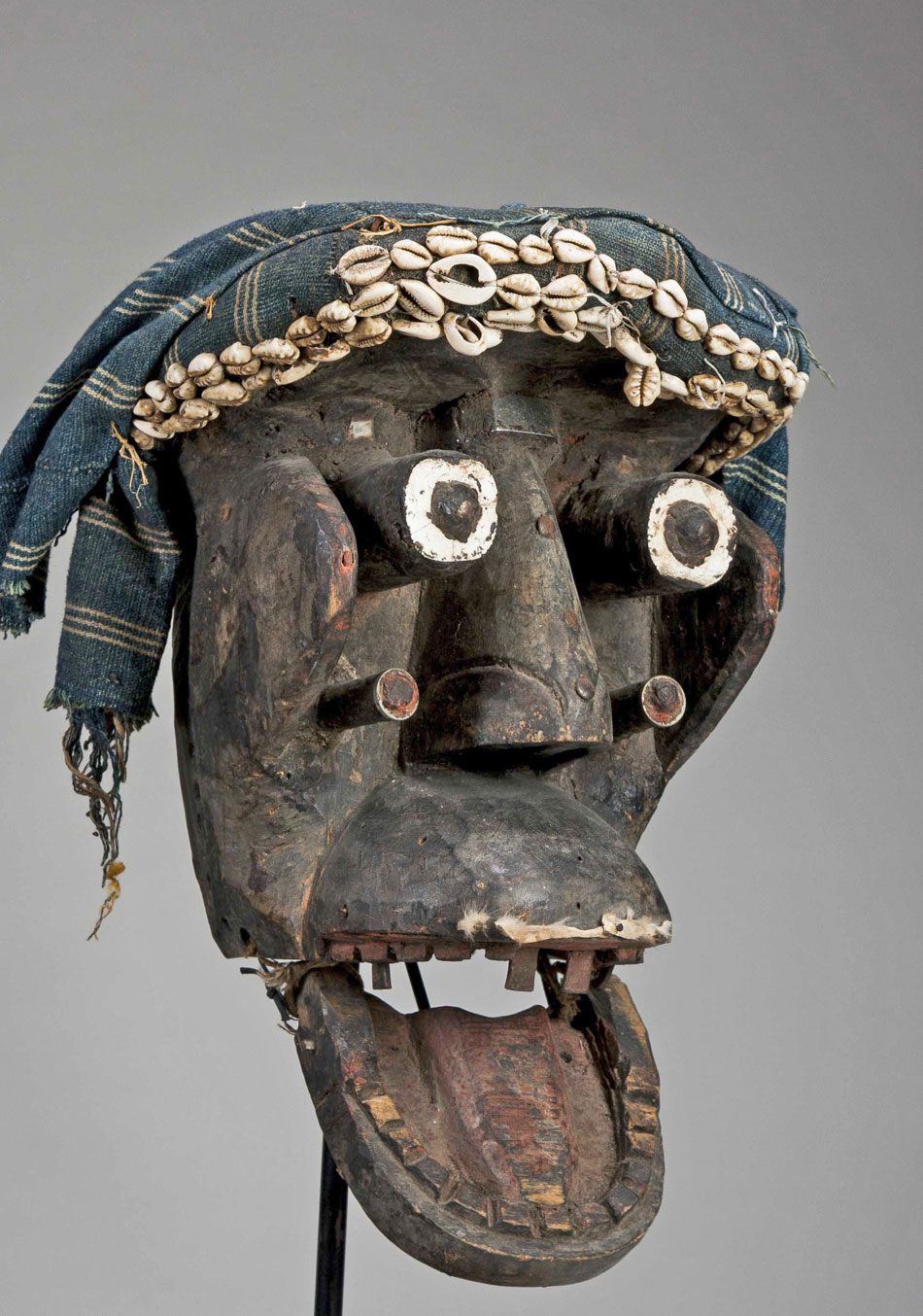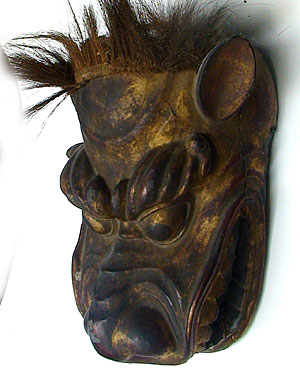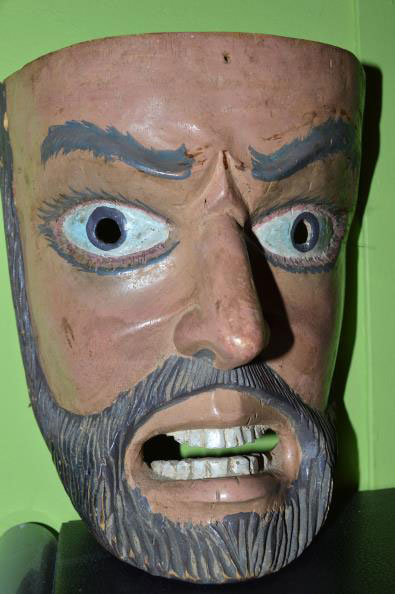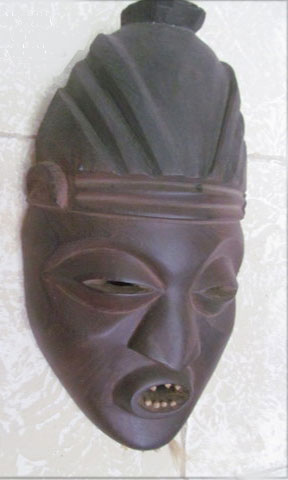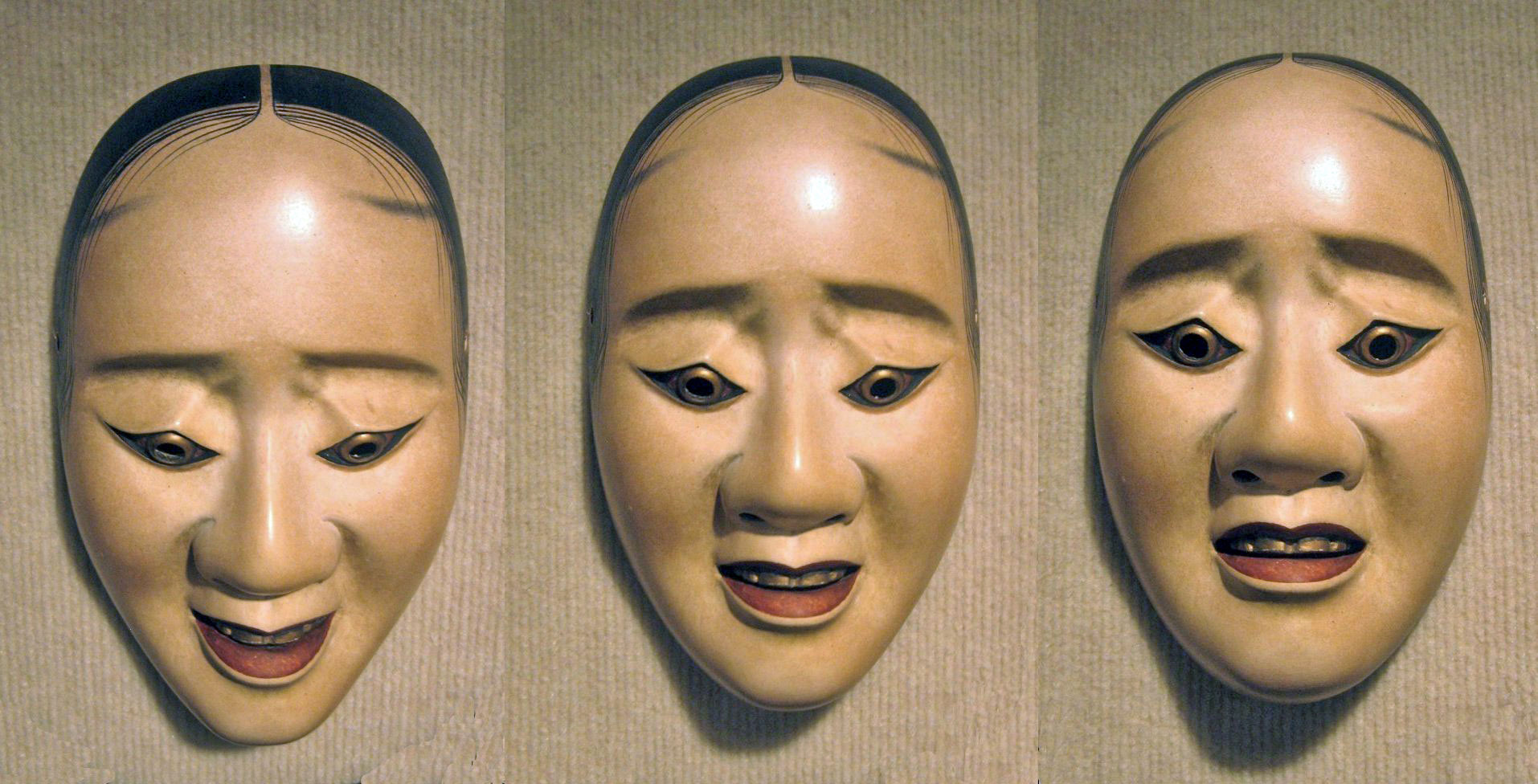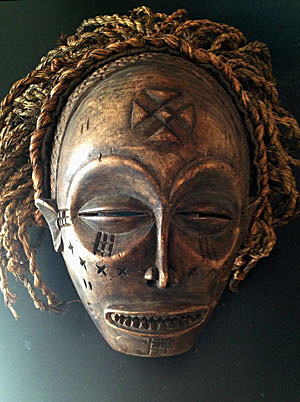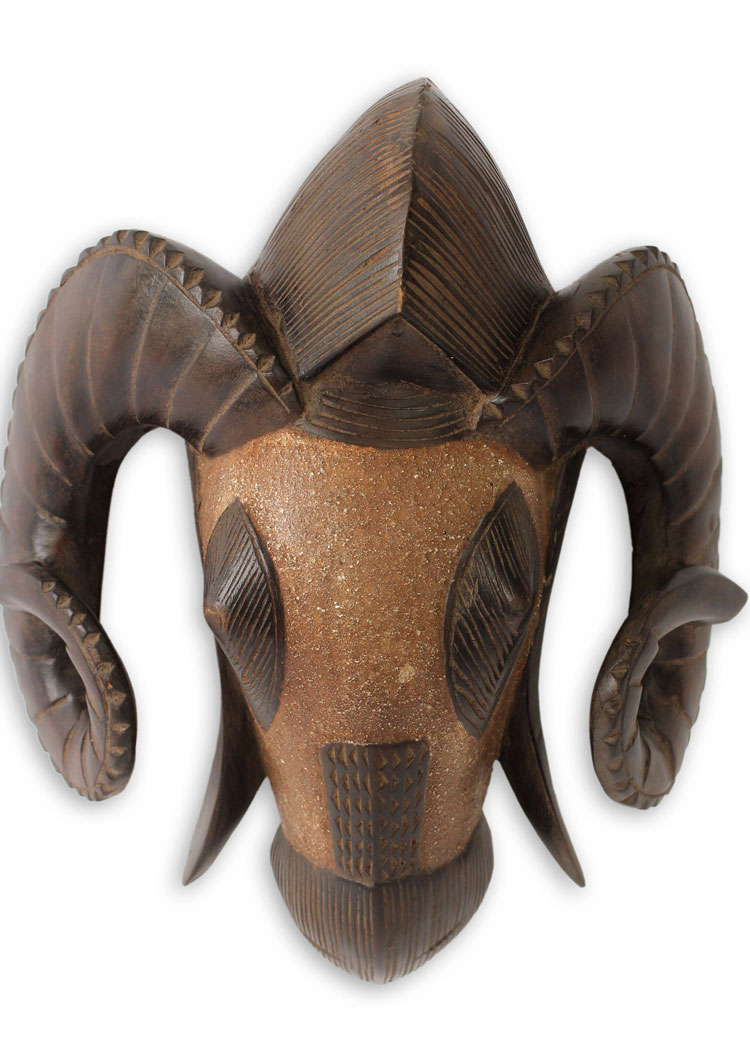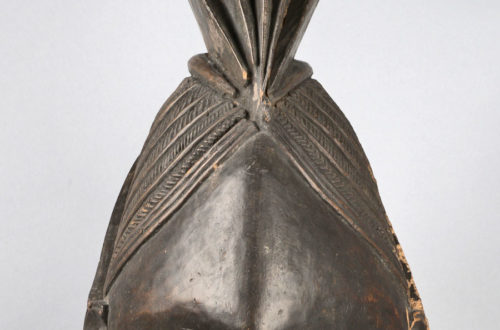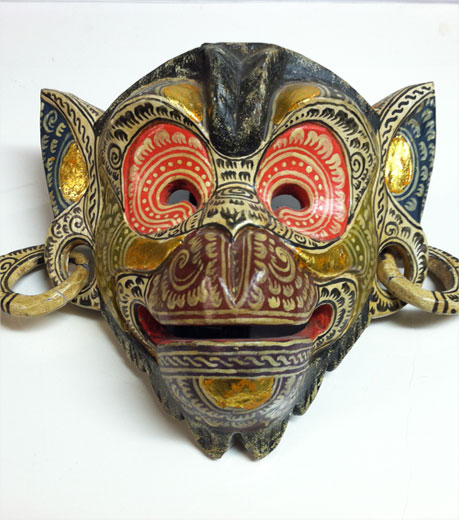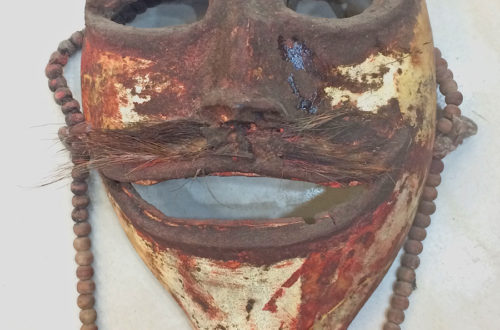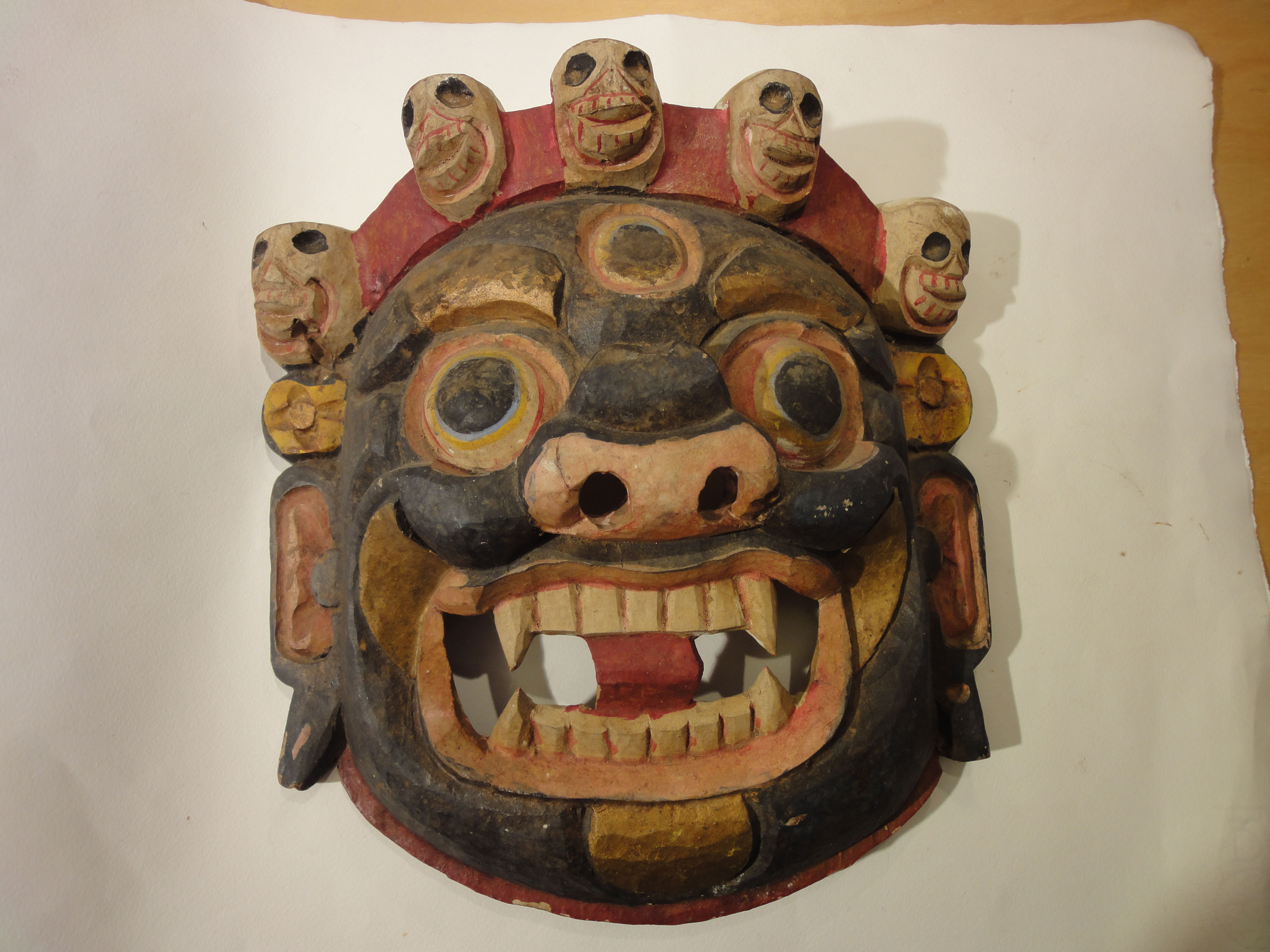Q: I picked up 8 of these Masks at a estate sale. Would like to know what you think of them. All are signed but one. I do not know ofwhat material they are made. 9 x 7 inches, there seems to be some wear on nearly all of them. Pete, 541 A: All 8 of your Japanese masks were made at the same work shop.
-
-
You got a good deal
Q: Hope this picture is ok! Just want to know the origin of a mask I bought at a flea market for $20. It is wood and very light. Mickey, 540 A: It is from the Himalayan region, perhaps Nepal or Tibet.
-
Scary animal mask from rural Indonesia
Q: Could you tell me about the value and origin of this mask? Susan, 539 A: I decided to show the rear view and side view because you can clearly see how these animal masks are constructed.
-
Black characters show up everywhere
Q: I recently bough this thinking it was African , but it may not be. It looks pretty old though and worn, not a tourist piece. Do you have an idea where it may be from. I collect African things so don’t intend to keep it. Chris, 538 A: I can understand your attraction to this handsome piece.
-
A special iron mask from Mali
Q: Purchased about 15 years ago, this looks nothing like my other African masks. The main construction is of thin iron. There is a woven material around the periphery of the tower-like portion of the mask. Also, a felt-like material on the forehead. There are some signs of white paint on the tower and the ears, plus what may be attachment holes on the rear periphery. I think it may have been wearable. Anne & Sam, 536 A: Lots of handsome iron masks have been coming out of Mali in recent years from both the Dogon and Bamana people.
-
From the remote areas of Indonesia
Q: The seller bought this mask 20 years ago in Bali. But he doesn’t think it comes from there. Someone told him it was from Sulawesi and that it could have been made to celebrate dead people. It’s wood and 8″ x 5″ large with hair, cloth and a wood stopper attached to a cord. Do you have any idea of its true origin and age? Philip, 535 A: Just north of Bali are the much larger islands of Sulawesi and Borneo. Either is a possibility. This appears to be an ethnographic artifact worth learning more about.
-
Kpelie masks can be wood or bronze
Q: I got three small masks, (one attached) to give as gifts for my sister. For some info I went on line and came across your web site. How much do you charge to review a mask? Bill, 534 A: On this blog I just do one mask for free.
-
Could this be WWII family treasure?
Q: I got it from my father in law who spent time in Japan after WW2. It is about 10″ from the top down to the nose and 10 wide (ear to ear). It is a lightweight wood, painted. Some of the paint has peeled off but a lot is still there. Tony, 533 A: The Japanese people were desperate for goods and services during the first few years of occupation and willingly traded family heirlooms to make ends meet.
-
Interesting for sure
Q: I have an interesting and rare African mask that I would like to sell. I do not have experience in these matters and I would not like to be under-compensated for the piece. Theo, 532 A: Your Chokwe mask is attractive to tourists and collectors, but does not have much resale value.
-
Turtle shells are a favorite in Tibet
Q: I found this mask at a flea market in Belgium yesterday. Thing is that it’s REALLY well made and I’d like to know if it’s in any particular ancient style you know of. Sam, 531 A: This is called a Kapala turtle mask and used for Tantric Buddhist ceremonies in the Himalayas or just for good luck in the home.

